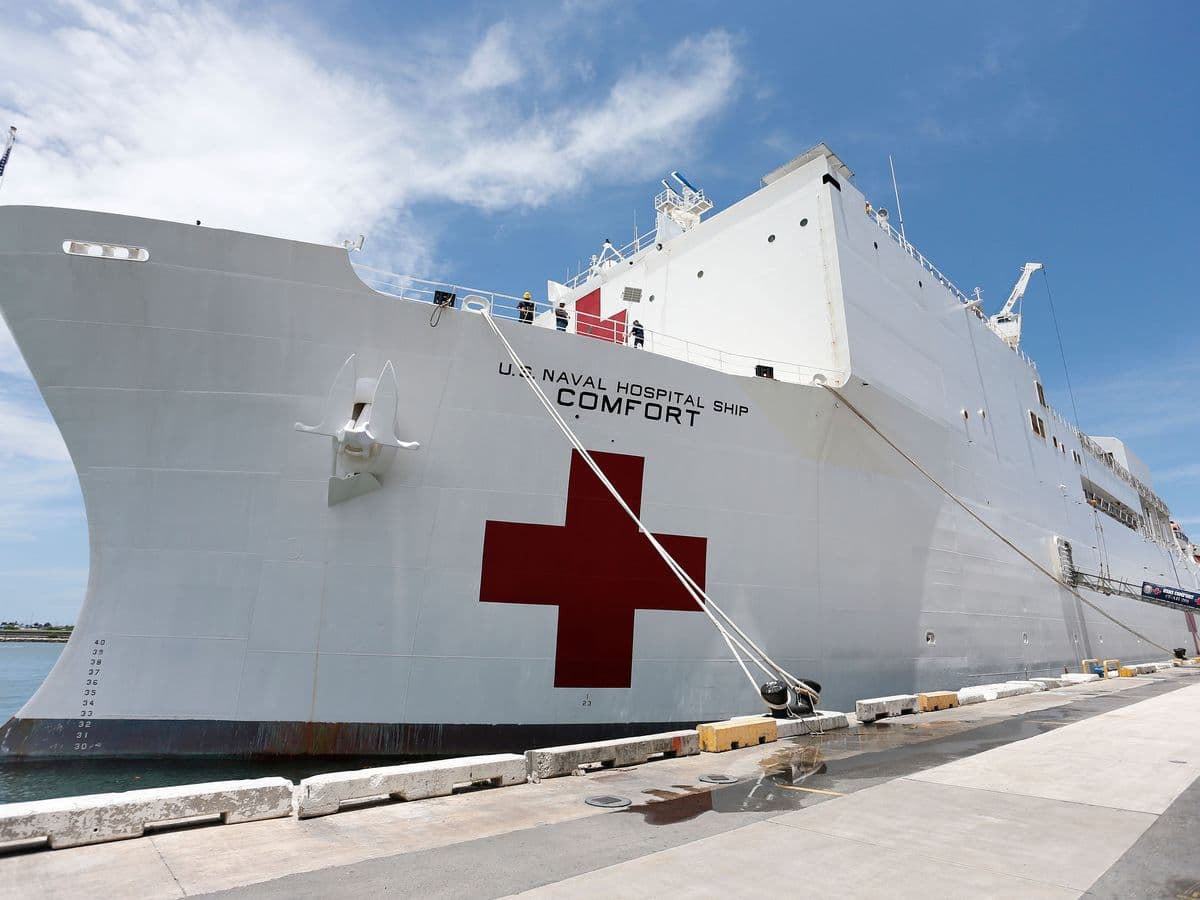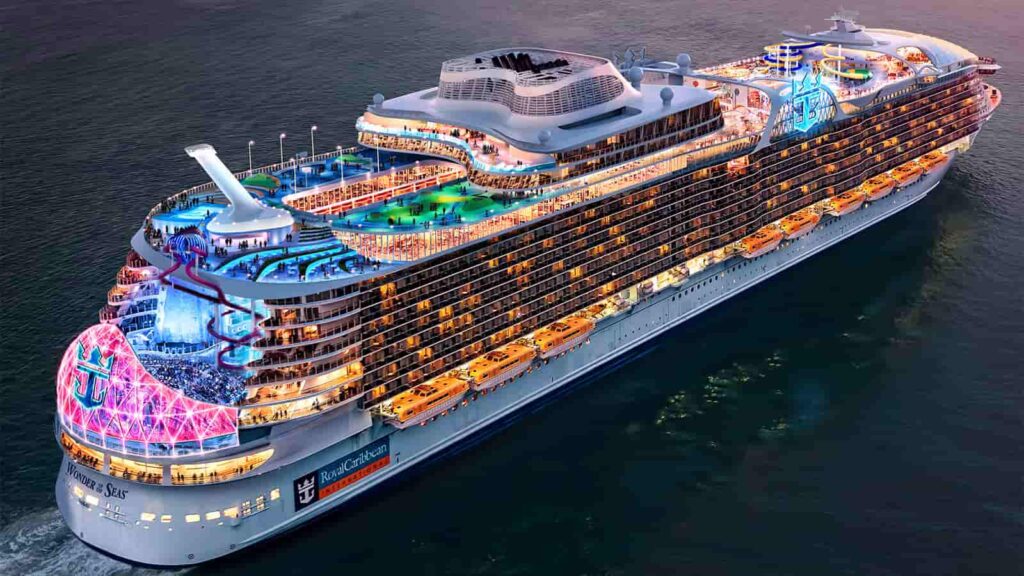Hospital Ships: A vessel that has been specifically designed, modified, or outfitted to help, tend to, and transfer the injured, ill, and abandoned. Ten days before its use, the parties involved in an international armed conflict must be informed of its name and description. It must be respected and kept safe; it cannot be assaulted or taken. Hospital ship crews, religious leaders, and medical professionals all deserve the same level of security.
The red cross, red crescent, or red crystal on a white background is the recognizable symbol indicating the safety of medical ships. Hospital ships’ lifeboats and coastal lifeboats are handled the same as hospital ships. So are a warship’s sick bays, to a feasible extent.
What are Hospital ships?
Hospital ships provide relief to sick, injured, and shipwrecked people regardless of country. Conflicting parties may halt and visit medical ships under strict guidelines.
Warships may demand that sick, injured, or shipwrecked individuals are turned over, under specific circumstances.
After the COVID-19 pandemic swept the globe several years ago, hospital ship demand surged again. During the worst of the pandemic, passenger and commercial ships as well as dedicated military vessels were converted to hospital ships.
US and European nations affected by the epidemic, such as Italy and France, needed hospital ships dramatically. There has been an increase in hospital ships even after the pandemic due to the crisis between Russia and Ukraine.
The planning and building of the Hospital ship

Unlike commercial or military boats, medical ships have little structural variation from them. Since they are in-situ treatment facilities that double as long-term care centers, they are not time-constrained.
During emergencies, they may need more speed or force to reach patients and medical personnel quickly. Tankers and bulk ships travel at modest speeds, while older passenger and military vessels go faster.
The primary specifications for a Hospital ship
Possession of sufficient room
When we talk about space, we mean the volumes that are both essential and sufficient to accommodate patients, medical staff, and crew members, as well as all of the equipment, supplies, and consumables that are needed for things like chemicals, medications, and medications on board.
SWATH Ship: A Unique Vessel with Reduced Seakeeping Motions
For example, it is easy to obtain any emergency drug or treatment from any place when one is depleted in a hospital or care facility situated on the land. On the other hand, a hospital ship must have enough room to store medications, chemicals, pharmaceuticals, and other necessities for the medical field.
To reload the essentials for long-term demands occurring during a pandemic, protracted war, or battle, a hospital ship must be deported at any shore.
Moreover, a designer places the highest importance on the layout of a hospital ship. To improve the design, centralization, and space optimization are essential, taking into account requirements and criticality levels. For example, we should organize departments such as surgery and critical care into a single tier or level.
As onshore hospitals, hospital ships have operating rooms, intensive care units, general wards, X-ray rooms, screening areas, and more. Similar to common cargo vessels, the medical crew and employees are also allocated dining and utility areas, along with the rest of the crew. Fire safety, insulation, and control plans consider containment and safe evacuation in the event of an epidemic.
Utility

By “utility,” we mean the appropriate setting and circumstances that resemble a full-fledged medical facility. This can include things like air conditioning, refrigeration that is needed for different medications and chemicals, high electrical power consumption that is normal for running numerous systems and equipment continuously, and oxygen purification plants that are needed for high-level oxygen supply. Furthermore, accessibility is a crucial component of hospital ship design.
This is for the ease of moving patients and healthcare personnel in general from one location to another quickly and easily, depending on the urgency of the situation. It’s also critical that several levels be accessible. Hospital ships install modern ramps and elevators to improve patient and healthcare worker movement. Another feature of hospital ships is their enhanced ventilation systems.
Consistency and water tightness
This is critical information for hospital ships. Individuals undergoing treatment or those who are disbaled and in need of extraordinary support already have precarious health. Therefore, there is a serious issue if the behavior of the vessel during the voyage makes this worse.
More importantly, any discomfort or disruption about the stability of the vascular during surgery should be avoided since it has the potential to result in fatalities! Therefore, hospital ships are designed, constructed, refurbished, and run in a manner that stays closer to the more conservative end of the ship design spectrum when compared to passenger ships. Out of all ship types, hospital ships should be the least sensitive to variations in stability and seakeeping.
Hospital ships should, technically speaking, strive for the fewest roll periods. This translates into increased levels of both dynamic and static stability. A small percentage of hospital stores are constructed locally, while the majority are converted and modified from pre-existing ones, such as passenger ferries and freight ships.
From a design perspective, passenger ships might be stable by nature. To lessen the impact of choppy seas, cargo ships must be outfitted with extra technologies including anti-roll gear and structural upgrades. Hospital ships frequently have thruster systems, bilge keels, fin stabilizers, gyro stabilizers, and anti-roll tanks.
The appropriate arrangement of areas and ballast tanks takes care of these types of ships’ weight distribution in addition to exterior and further installed methods. To accommodate the vessel’s enhanced stability characteristics, the whole tankage of previously built cargo ships is frequently dramatically revised. Weight and ballasting within acceptable limits are frequently compromised to achieve speed.
Hospital ships have to construct a sizable superstructure to house patients, medical personnel, and crew. Boats like tankers or bulk carriers often expand or renovate the superstructure to meet their adapted needs.
Therefore, from a stability perspective, this becomes problematic because avoiding the towering superstructure is not an option. As a result, designers must carefully optimize the various stability factors. Additionally, the vertical accelerations must be minimized.
When it comes to operations, hospital ships generally attempt to stay out of hazardous sea conditions. But in the event of certain sea states, they have every tool at their disposal to enhance the seakeeping qualities as much as feasible. Inclement weather should be avoided when doing crucial duties like surgery. Seakeeping properties are meant to be maintained at their highest possible level, even when traveling at zero speed.
Icebreaker Ships: Breaking Through Ice-Covered Waters for Navigation
Structure

Hospital ships are similar to cargo or other general-purpose vessels structurally. For converted vessels in good shape, nothing is done to strengthen the general hull construction because the savings can be maximized by spending more on the internal systems and facilities on board. However, according to design standards, medical ships flying the military flag have additional layers of fortification.
Electricity, strength, endurance, and resistance
The power requirements to reach greater speed levels are not very significant because the speed requirements are modest. Power to maintain hotel loads, however, takes precedence. Numerous facilities and systems have very high onboard power consumption. Therefore, there are multiple highly rated power sources available. DG sets and gensets, as well as standby and emergency power sources, provide backup power.
Emergency gensets should be able to provide power to support the patients on board during a complete blackout or when the main propulsion system of the vessel is halted. A safety margin of at least 10% excess is provided for the estimated hotel load consumption.
High power consumption values now translate into increased fuel usage. The company makes sufficient fuel supplies and excess fuel. They also design hospital ships with a significantly larger margin for endurance, considering worst-case conditions like the need to stay afloat for extended periods and accommodate all patients on board. They prioritize the tank capacity for fuel supplies and storage.
People prefer conventional propulsion systems, especially for modified or adapted boats. On the other hand, azimuth or pod propellers are a feature of contemporary designs. All medical ships previously discussed have higher stability and seakeeping devices.


